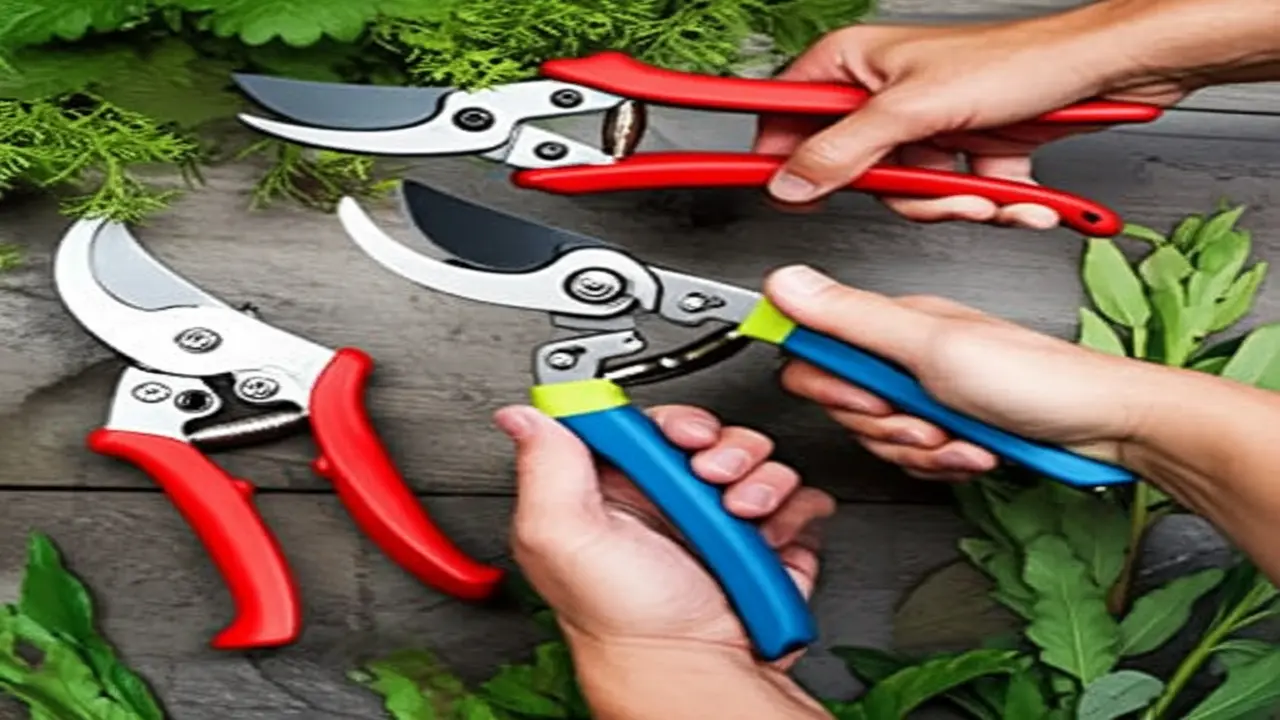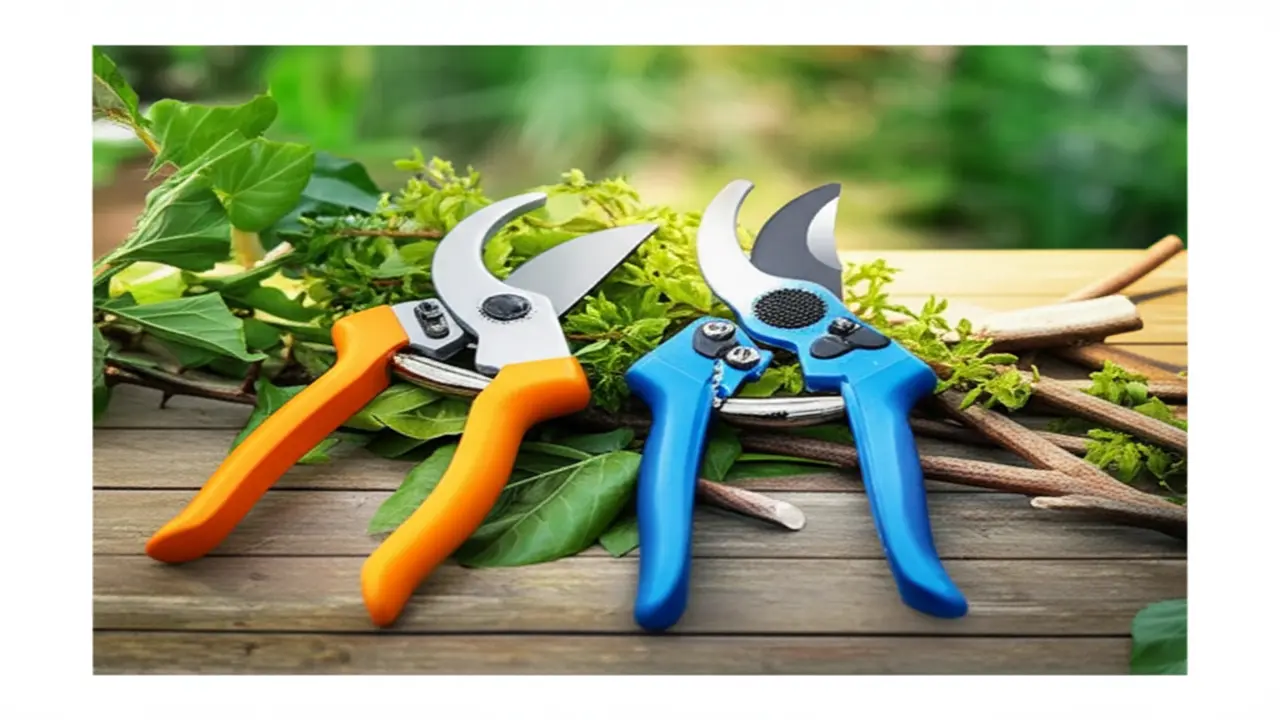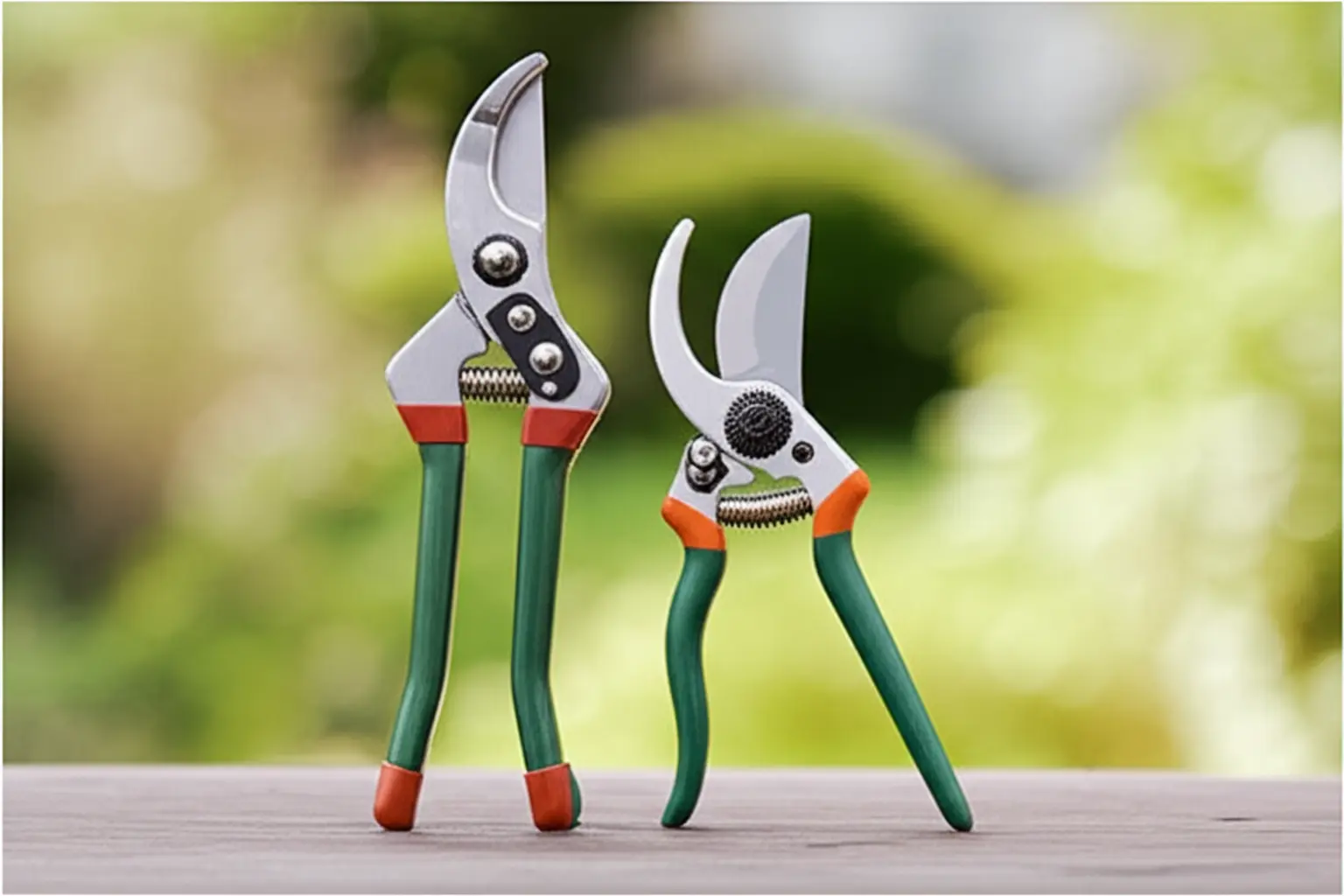Navigating the terms pruning shears vs secateurs can be confusing since these are often used interchangeably depending on the region. For gardeners aiming to prune effectively in 2025, recognizing the subtle differences and their relationships is crucial. Pruning shears generally refer to a broad category of handheld cutting tools, whereas secateurs are a specific type known for precision and ease. This chapter clarifies these terms and sets the stage for understanding the various types of pruning tools available, helping you select the right tool for your gardening tasks with confidence.

1. What Are Pruning Shears? The Broad Category Explained
Pruning shears serve as a fundamental category of gardening cutting tools designed to trim and shape plants by cutting branches, stems, and twigs. This umbrella term includes several specialized subtypes such as hand pruners—also known as secateurs—loppers, pruning saws, and hedge shears. Each subtype caters to different pruning needs: hand pruners or secateurs excel at precise cuts on small branches, while loppers handle thicker limbs, and pruning saws tackle even larger branches that shears cannot cut. Hedge shears are tailored for shaping hedges and shrubs. Understanding the distinction in pruning shears vs secateurs is essential: secateurs are a specific type of pruning shear, prized for their maneuverability and precise control. These tools contribute significantly to plant health by facilitating clean cuts, promoting growth, and preventing disease. For gardeners aiming to maintain thriving landscapes, selecting the proper type of pruning shear depending on the task can improve efficiency and plant care outcomes. For practical maintenance advice, exploring
how to sharpen pruning shears can ensure your tools remain effective and durable through seasons.
2. What Are Secateurs? The Specific Hand Tool
Secateurs, often confused with general pruning shears, are a specialized hand tool designed for precision in garden maintenance. Unlike larger pruning tools, secateurs are intended for cutting smaller stems and branches, typically up to 1 inch in diameter, making them ideal for tasks like deadheading flowers or light pruning to shape plants. They come primarily in two blade styles: bypass and anvil. Bypass secateurs feature two curved blades that pass by each other, providing a clean, exact cut suitable for live plants to avoid crushing stems. Anvil secateurs have one flat blade that presses against a flat surface, suitable for tougher, woody branches but can be less precise. For ease of cutting, some secateurs include ratchet or geared mechanisms, reducing hand strain during repetitive pruning. Understanding the distinction between pruning shears vs secateurs helps gardeners choose the right tool for delicate trimming versus heavy-duty pruning, optimizing plant health and tool efficiency. For more detailed maintenance tips, see our guide on
pruning shears cleaning. This knowledge empowers effective gardening with the correct hand tools in 2025.

3. Secateurs and Pruning Shears: Clarifying Their Relationship
Secateurs are essentially a subset of pruning shears—they represent the most common type used for precise cutting in gardening. The term “pruning shears” acts as a broader category, encompassing all hand-held tools for trimming plants, while “secateurs” usually refer to the classic design with a sharp blade and counter blade. Regional language differences influence usage: in American English, “pruning shears” is the more familiar term, often used interchangeably with secateurs, whereas British English favors “secateurs” for the same tool. To clarify with an analogy, think of all secateurs as pruning shears, but not every pruning shear is necessarily a secateur. Understanding this hierarchy helps gardeners select the right tool terminology based on their location and the specific gardening task. For more detailed care tips on these tools, check
pruning shears cleaning to maintain their efficiency and longevity.
4. Key Differences Summarized in a Comparative Table
Understanding the distinction between pruning shears and secateurs is crucial for gardeners seeking the right tool for their pruning tasks in 2025. Below is a clear comparative table summarizing their key differences:
| Feature | Pruning Shears | Secateurs |
|——————-|——————————————–|———————————————-|
| Usage Scope | Broad category including various hand pruners | Specific type of pruning shear with a particular cutting style |
| Size Capacity | Generally covers a wide range of branch thickness | Usually designed for smaller to medium branches |
| Cutting Mechanism | Can include bypass, anvil, or ratchet types | Mostly bypass blades providing clean cuts |
| Examples | Includes heavy duty pruning shears, small pruning shears, cordless models | Traditional garden secateurs used for light trimming |
| Common Terminology| Often referred interchangeably with pruning scissors or clippers | Term more precise, often used in professional gardening contexts |
This summary helps gardeners distinguish between the tools quickly and select the most suitable option for types of plants and cutting precision needed. For more detailed guidance on specific tool types and maintenance, see our article on how to sharpen pruning shears to ensure long-term performance and sharpness.
5. Beyond Secateurs: Other Pruning Shears and Tools
In 2025, understanding the distinction between pruning shears vs secateurs expands beyond these common tools to include various specialized instruments designed for specific pruning needs. Loppers are a crucial category, featuring two-handed operation with longer handles to provide leverage for cutting thicker branches that standard secateurs cannot handle. Pruning saws come into play when branches exceed the cutting capacity of shears, offering precision and power for larger cuts typically above 1 inch in diameter. Hedge shears differ markedly from secateurs; they are designed with longer, straight blades intended for trimming shrubs and shaping hedges rather than precision cuts. Each tool occupies a unique space within the pruning spectrum, with secateurs typically used for detailed, smaller cuts such as deadheading and trimming delicate stems. For gardeners aiming to select proper pruning equipment, distinguishing these types helps improve efficiency and plant health. Tool maintenance and selection tips can be found in related guides on
how to sharpen pruning shears, which enhance the longevity and performance of all pruning tools. This comprehensive understanding enables practical garden management using the right pruning tool for each task, bridging the gap between secateurs and their specialized counterparts.

6. Choosing the Right Pruning Tool for Your Garden
Choosing the right pruning tool is essential for maintaining a healthy and beautiful garden. When it comes to pruning shears vs secateurs, understanding their differences can guide your selection. Secateurs are ideal for most small to medium pruning tasks involving shrubs, flowers, and young branches. For cutting thicker branches, loppers or pruning saws are better suited. The type of blade also matters: bypass blades provide clean cuts on live, green wood, reducing plant damage, whereas anvil blades are better for dry or dead wood as they crush through tougher material. Beyond blade type, ergonomic factors like handle comfort, spring action quality, and secure locking mechanisms influence your ease of use and safety during extended gardening sessions. For example, spring-loaded handles decrease hand fatigue, making repetitive cuts less strenuous. To enhance your pruning tool effectiveness, also consider maintenance practices which prolong blade sharpness and tool longevity. For further advice on tool care and selection, check our detailed guide on
small pruning shears. This knowledge empowers gardeners in 2025 to make the best choices tailored to their garden’s unique needs, ensuring precise cuts and healthy plant growth.
7. Caring for Your Pruning Shears and Secateurs
Proper care of pruning tools distinguishes a successful gardener from an average one, especially when comparing pruning shears vs secateurs. Both tools require consistent maintenance to ensure clean, precise cuts, which promote plant health. After each use, thoroughly clean the blades to remove sap and debris, preventing rust and buildup. Sharpening blades regularly maintains their cutting efficiency; dull blades crush plants rather than cut them, increasing disease risk. Use a sharpening stone or follow a detailed guide on
how to sharpen pruning shears. Lubricate moving parts with a light machine oil to keep the action smooth and prevent corrosion. Proper storage is equally vital; store shears and secateurs in a dry place, ideally in a holster or protective case to safeguard blades and maintain safety. This routine care extends the tools’ lifespan and ensures they perform optimally when needed, highlighting the essential differences and maintenance needs in the pruning shears vs secateurs debate.




